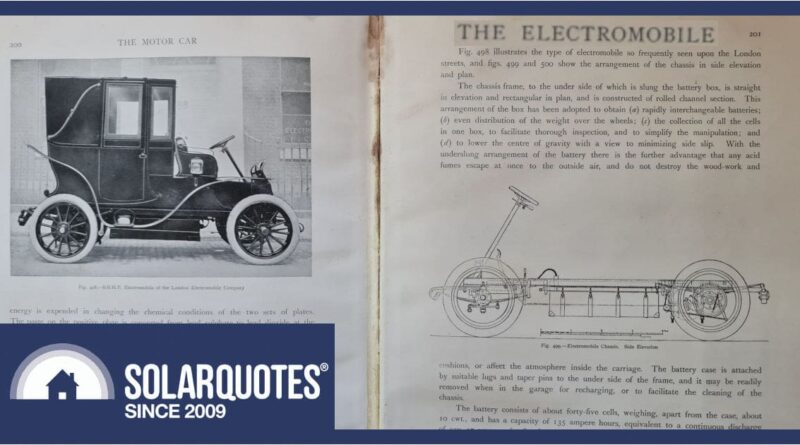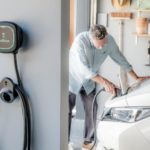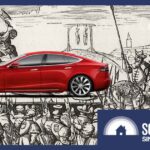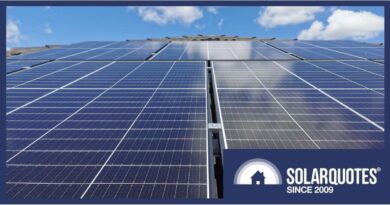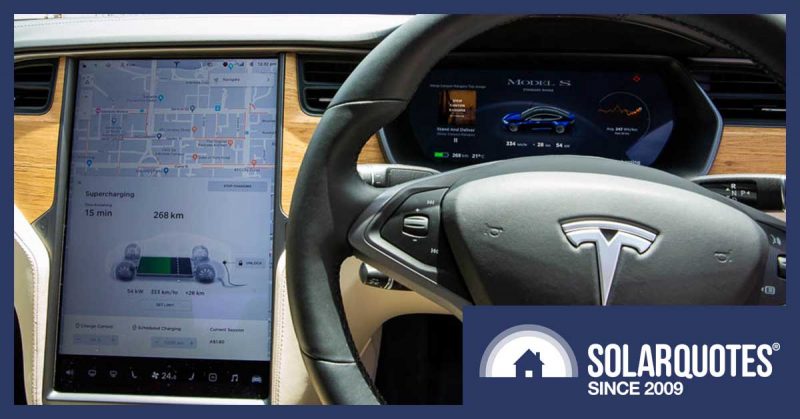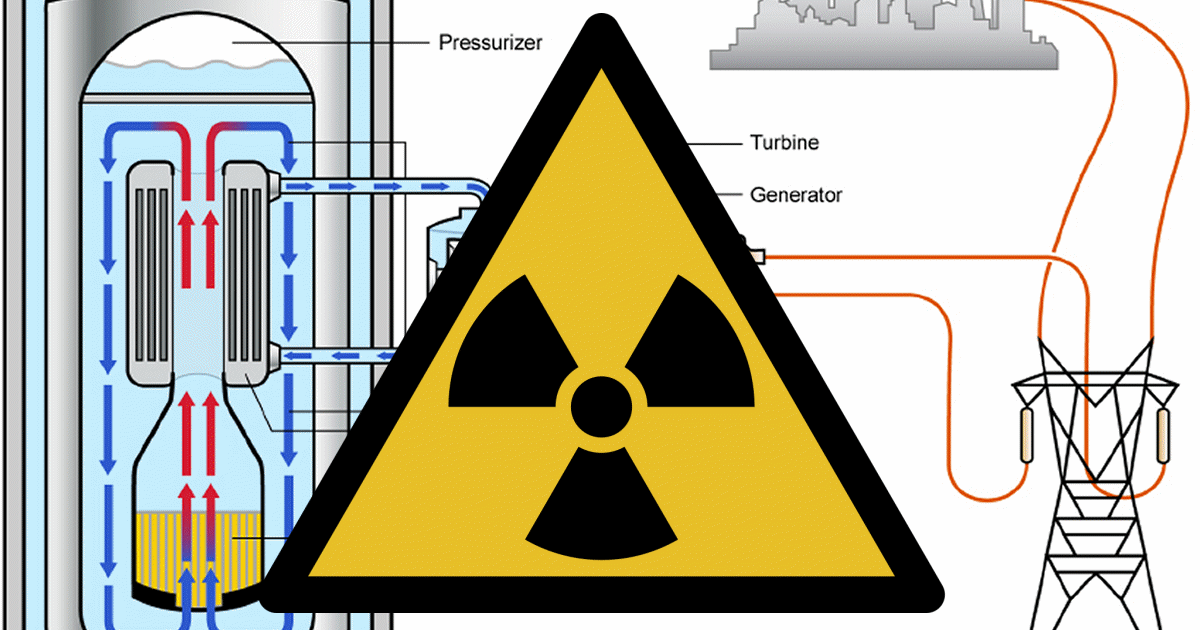The 100-Year History Of The Electromobile Leads Us To A Renewable Future
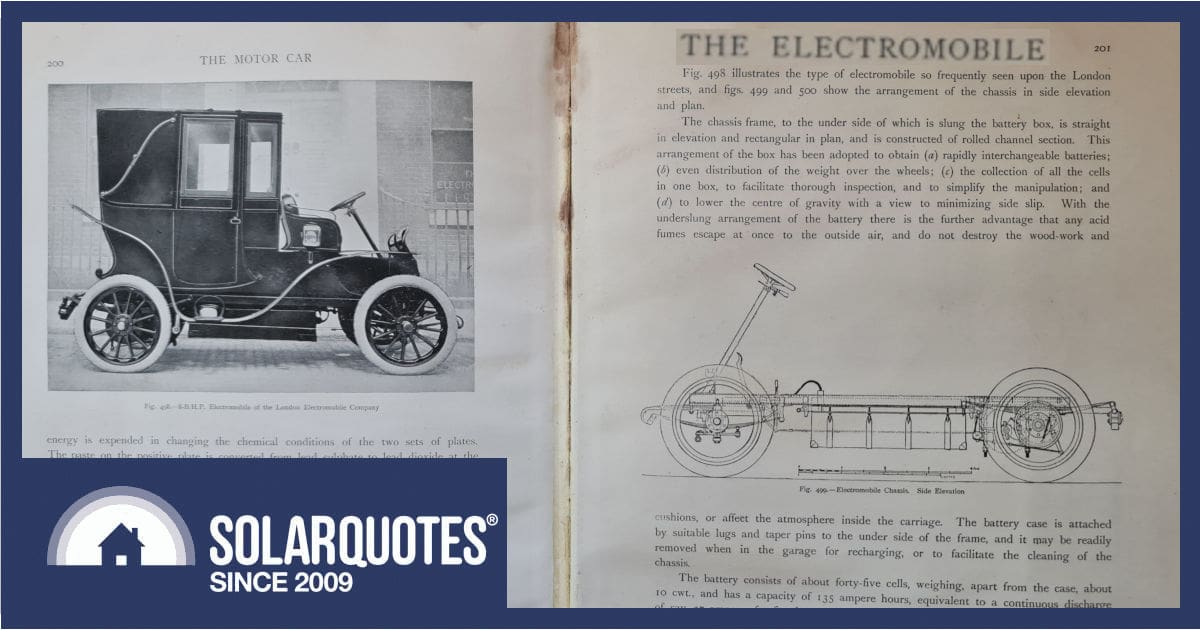
Image credit “Modern Power Generators” printed 1908
The first car I ever owned turns 100 this year.
What tenuous link does this have with solar energy for your home or business? Well, I guess it’s mainly about fuel… and access to it.
Combustion Engines Scared The Horses
As a young bloke, my grandfather ran a team of horses to plough his farm, so a portion of productive ground was set aside for feeding them. As a society, we had vast tracts of land dedicated to growing chaff to fuel the transport network, which was horses.
People living in towns and cities had to buy chaff in, because they couldn’t grow enough at home.
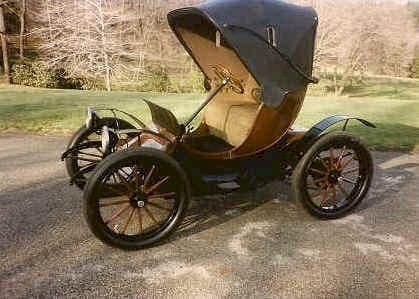
An EV from 1913. This isn’t an automobile, it’s an electromobile.
Around 1900, Steam was the technology with a hundred-year history, EVs were 38% of the market, and infernal combustion engines were unreliable, smelly and frightened the horses. (which was important when the only thing more ubiquitous on the street was horse manure)
Within 13 years, that status quo was utterly upended. Cars had taken over. But people still had to buy their fuel in.
Parallel Innovation, 100 Years Later
How did it happen? Well, Henry Ford happened. Ford built the Model T and created a mass market in the process. I own a few examples, and I could wax on about them… but a few parallels have struck me between the innovation back in the 1900s and the innovation we’re seeing today.
In 1914, Ford was building over 1,000 cars per day. He doubled the working wage and made 25% profit on every car; he developed new methods and machines that put him streets ahead of the competition and made no secret of how.
Tesla, with its open patents, has pushed tool makers to invent a machine that casts the whole front end of a car in seconds — almost as fast as Henry was more than a century ago.
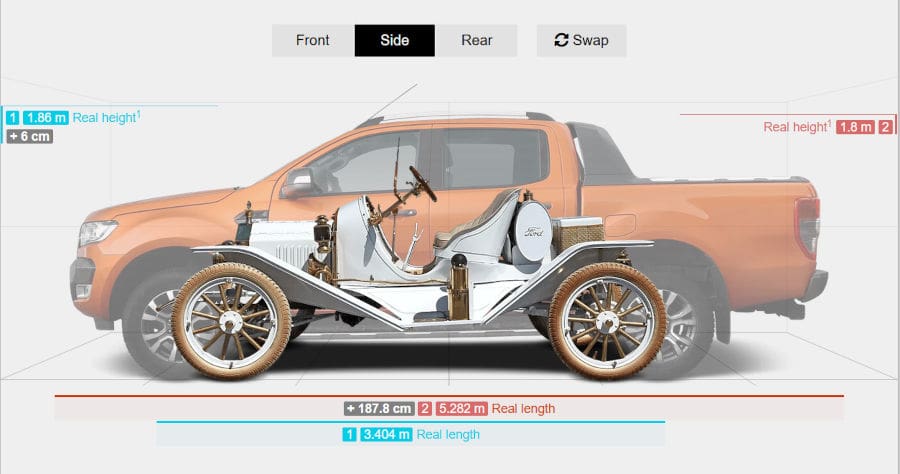
Australia’s most popular vehicles, 100 years apart. The Model T is a pretty racy, low-slung version, if we’re being honest.
Cost Curvature
Ford cut prices for the Model T for 19 years straight. Every year, despite inflation, the price fell.
So when you read about Hertz quitting EVs and going back to petrol, remember that Tesla has cut prices, thus cutting the resale value of a one-year-old rental fleet. Hertz is a used car company as much as anything.
History Is Repeating
Still, by 1930, Doble had steam cars started from cold in a minute, hitting full speed in 90 seconds. However, they were expensive and thirsty and would never approach the price of the then-dominant petrol car. The Steam era was over.
While petrol engines are faster and cleaner than ever, Tesla has opened the door to the newest era. Now we’re seeing cheaper models coming from China, legacy car makers should be petrified.
Apparently it was 21 years ago that DVD players outsold VCRs for the first time. 2 years on they were outselling by 40 to 1. Funai of Japan, the very last manufacturer, ceased production of VHS equipment 8 years ago.
The Model T Is Beautifully, Gorgeously, Supremely, Simple.
The T Ford has a four-cylinder side-valve engine, a two-speed transmission and — after 1919 — fancy electric lights and starting.
With no water pump, fuel pump, oil pump, or front brakes, there is very little to go wrong with the most significant car of all time.
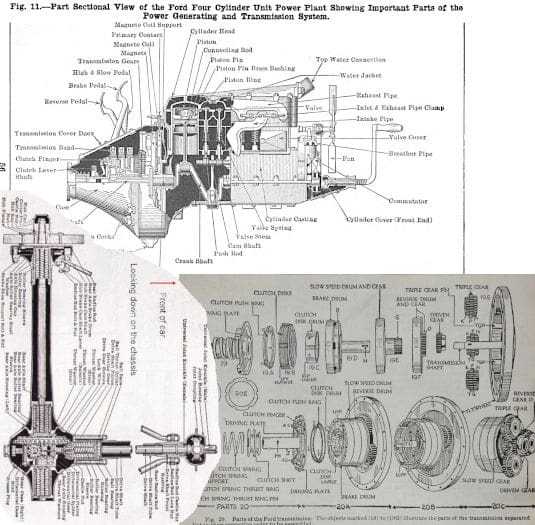
By modern standards this is a simple machine, but not compared to an EV
Here’s the kicker: my modest little EV has far fewer moving parts.
The electric motor in an iMiev has two bearings and one moving part. The motor for a Model T Ford has 25 bearings or bushings and 115+ moving parts, depending on how you count them.
For a very simple combustion engine, there’s a lot of machining involved to get them all to fit and play nicely with three litres of motor oil.
Granted, modern EVs have coolant pumps, air conditioning, electric windows, remote mirrors, central locking and a kilometre or three of complex wiring. But the energy consumption is much more modest than Ford’s 20 miles per gallon.
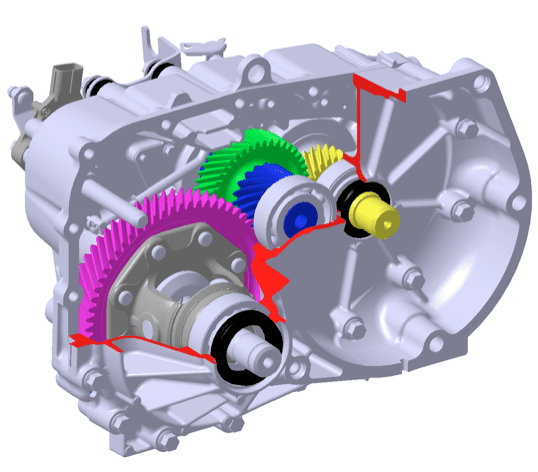
Eight gears and six bearings make up an iMiev transaxle. The rear axle in a T Ford has one less cog and just as many bearings.
Can We Regain The Virtue Of Vehicles Past?
We may need to reject the idea of what has been sold to us as progress.
My twin turbo diesel VW idles at 800 rpm, while a T Ford makes maximum torque for climbing hills at 900 rpm. From an engine that develops just 2ohp at 1600rpm, 55km/h is a comfortable cruising speed. But to flatten hills and go twice as fast, the VW is given 10 times as much power.
The principal difference is weight.
My dual cab, six-speed, all-wheel drive work-wagon weighs three to four times as much as a T Ford.
That’s a hell of a lot to manufacture and to drag around with you everywhere. I should know, because I hoard too many tools and spare parts in my ute.

Commuting with two tonnes of extra weight is a bit ludicrous really
Reject Modernity, Embrace Beauty… And Bicycles
They say simplicity is the ultimate refinement. If you ask me, humanity’s most efficient invention is the bicycle… and we should get back on our bikes.
To this end, some visionary local councils in Adelaide offer incentives for people to buy cargo bikes.
With electric assistance, they become an incredibly practical tool for last-mile goods delivery, grocery getting and child carting. An average speed of 25km/h is enough… all they really need is some civil disobedience on the 250-watt electric power limit.
We already know about improved health outcomes for riders, but the benefits don’t stop there. There are improved societal outcomes, too.
When the streets are ‘clogged’ with separated bicycle lanes instead of parking, governments don’t have to waste money on roundabouts, speed humps, crossings or traffic lights. With less public space surrendered to cars, kids can play outside and people might meet their neighbours, creating more cohesive communities.
Renewables Are Practical Now
If we’re going to get on with an energy transition, we need to get on better with our neighbours. A key component is sharing resources; solar power is a great starting point.
If you’re lucky enough to have a house in the suburbs with enough solar roof space to power your life, you’ll need that energy to run an EV or eBike because suburbs have sprawled, and services are further apart.
If you’re lucky enough to live in a city dense enough to support public transport at seven-minute intervals, then getting around isn’t going to be a problem. But apartment dwelling isn’t ideal for solar self-sufficiency.
Either way, solar is now the cheapest energy ever generated, and — for the first time — it can be generated within the home. Incumbent industries, like domestic gas, they’re the horses we are scaring now.
It’s been pleasing over the past couple of years to see a change in rhetoric as people realise the benefits of renewable power.
For the first time, it’s practical to live in a reasonably built-up area and have an endless supply of energy available. Cheap, safe, reliable, renewable, quiet; what’s not to love about solar energy?
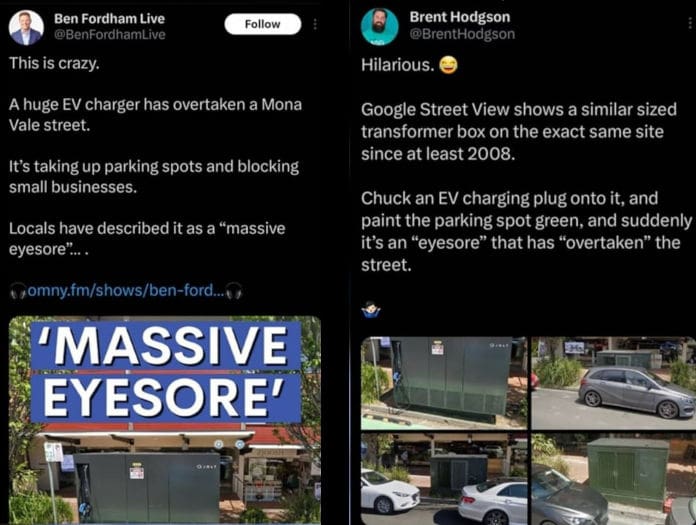
More people are now calling out the sceptics.
Energy Solutions Are Here
We need the political will to remove electricity networks from private monopolies and focus on making them a public good.
We can share electricity when it’s abundant, store it when it’s scarce, and reduce costs for everyone.
If that sounds like some mad experiment or a communist utopia that will never work, then please tune in next week when we’ll explain the retail model that’s already in place to make it happen.
Original Source: https://www.solarquotes.com.au/blog/electromobile-renewable-future/

